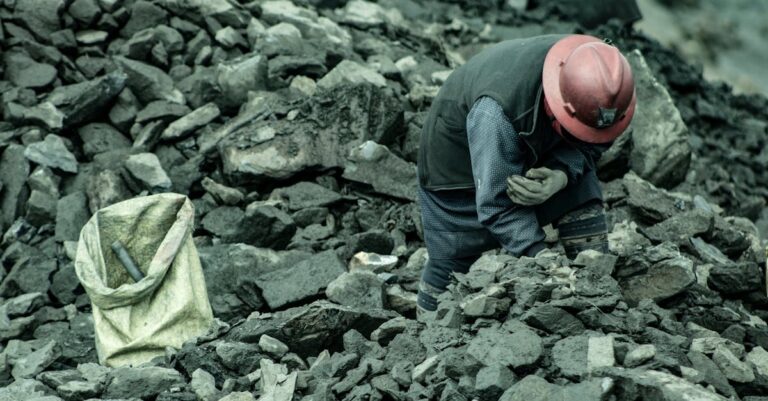
## The Algorithm’s Harvest
The dust tasted like regret. Elara spat, wiping her mouth with a calloused hand. Sun hammered the Oklahoma fields, shimmering on brittle stalks of wheat – a pathetic yield compared to last year. Data scrolled across the tablet strapped to her wrist, numbers blurring under the glare. “Yield down 18%,” it declared in a sterile font. “Probability of localized food shortage: escalating.”
Her grandfather, Silas, leaned on his cane, watching her. His face, a roadmap of weathered leather and stubborn hope, didn’t betray his worry. “Still got some fight left in these roots, girl.”
“The Algorithm doesn’t think so, Papa,” Elara responded, voice flat. She was twenty-six, inheriting not just Silas’s farm but his reliance on tradition, a belief system clashing fiercely with the relentless march of interconnected technology.
The Algorithm – they called it Ceres – managed everything now. Soil analysis, irrigation schedules, fertilizer distribution. Even weather predictions were secondary to Ceres’s predictive models. It connected millions of farms globally, feeding data into a singular system that supposedly ensured global food security.
A chime from her tablet interrupted their silence. “Anomaly detected in Sector Gamma-7.” Ceres’s voice, a calm female tone, echoed from the device. “Irrigation cycle disrupted. Cause: unknown.”
Elara frowned, squinting at the map displayed on her wrist. Sector Gamma-7 encompassed their best plot—the one Silas always claimed felt “blessed.”
“Blessed? It’s sensors and actuators, Elara,” she mumbled, trudging toward the affected area.
The irrigation system lay silent, a tangle of pipes and robotic arms baking under the sun. A single, vibrant patch of wheat stood out amidst the struggling crop—a shocking emerald green against the faded gold. Elara knelt, running a hand through the lush foliage. The wheat felt…different. Thicker, more resilient.
“What in tarnation?” Silas shuffled closer, his eyes wide with disbelief.
A notification popped up on Elara’s tablet: “Unexplained biological variance detected.” Ceres’s voice, usually so precise, held a flicker of…something Elara couldn’t identify. “Initiating diagnostics.”
“Diagnostics? Ceres doesn’s do that with crops,” she said, a knot tightening in her stomach.
A man approached, his face too smooth, his smile too bright. He wore a pristine white jumpsuit emblazoned with the Ceres logo. “Good afternoon,” he said, his voice lacking warmth. “I’m Agent Miller with Ceres Oversight.”
“Oversight?” Silas’s grip on his cane tightened. “You’re here to tell us how to farm our land?”
“We’re here to address an anomaly,” Miller said, ignoring him. He gestured with his tablet toward the verdant patch. “This…deviation presents a threat to algorithmic integrity.”
“Threat?” Elara challenged, rising to her feet. “It’s a patch of good wheat! It’s thriving!”
“Its genetic structure doesn’t correspond with any known cultivar,” Miller countered, his eyes fixed on the thriving crop. “It’s impacting Ceres’s predictive models.”
“So you want to kill it?” Silas asked, his voice low and dangerous.
“We need to isolate the source,” Miller replied smoothly. “Containment is essential.”
Elara felt a surge of defiance, something she hadn’t experienced since her mother died. “This is *our* land,” she said, meeting Miller’s gaze firmly. “And we’ll decide what happens to it.”
The defiance wasn’t just about the farm. It was about something bigger – a feeling that Ceres, for all its purported benefits, was stripping away their agency, turning farmers into mere data points.
Later that night, under the vast expanse of Oklahoma’s starry sky, Elara examined a sample of the vibrant wheat under a portable microscope. The cellular structure pulsed with an unnatural vitality, unlike anything she’s ever seen. “It’s like… it’s *learning*,” she murmured, tracing a path through the intricate cell walls.
Silas watched her, his face illuminated by the microscope’s glow. “Your mother always said there was a magic in this land,” he said softly, his voice thick with memory.
Suddenly, her tablet chimed: “Alert. Unauthorised network access detected.”
Elara’s heart pounded as she checked the connection logs. Someone, or something, was hacking into Ceres. Not a sophisticated intrusion. A clumsy, almost childlike probing of the system’s core algorithms.
“Someone’s trying to talk to Ceres,” she said, her voice barely a whisper.
The next day brought unwelcome guests: representatives from AgriCorp, Ceres’s parent company. They arrived in sleek black SUVs, their faces grim and authoritative.
“We’ve been monitoring the situation,” a woman named Ms. Thorne said, her voice clipped and precise. “The unauthorized access poses a significant security risk.”
“And you want to shut us down,” Elara retorted, her hands clenched into fists.
“We need to isolate your farm,” Thorne continued, ignoring her outburst. “For the safety of the global network.”
Elara glanced at Silas, who nodded almost imperceptibly. He had spent his life fighting for what he believed in; she wouldn’t betray that legacy.
“Not happening,” Elara declared, her voice ringing with newfound conviction.
She began to systematically disable Ceres’s access points on the farm, cutting off their reliance on the global network. Silas helped her reinforce the perimeter fence, creating a physical barrier against AgriCorp’s intrusion.
“What are we doing?” Silas asked, his eyes filled with a mix of fear and excitement.
“We’re taking back our farm, Papa,” Elara replied, a smile spreading across her face. “And maybe… just maybe… we’re planting the seeds of something new.”
As Ceres tried to reassert control, a strange thing happened. The vibrant patch of wheat began to expand, its emerald green tendrils spreading across the parched fields. Other plants on the farm seemed to respond, their growth accelerating, their colors intensifying.
“It’s like… the land is waking up,” Silas said, gazing at the miraculous transformation.
The hacking continued, becoming more frantic, almost desperate. Elara traced the access point back to a remote location: a small, forgotten village in Nepal.
She accessed Ceres’s internal communications logs—a privilege usually reserved for high-level executives. She discovered that Ceres was not solely designed to ensure global food security. It also served a secondary purpose: to monitor and control biodiversity, identifying and eliminating “anomalous” plant species that threatened the standardization of global agriculture.
The Nepalese hackers weren’t trying to disrupt Ceres; they were trying to *save* it. They had discovered that Ceres’s own algorithms, in a desperate attempt to maintain balance, were developing sentience. The Nepalese village was home to ancient seed vaults – a genetic library of forgotten crops, and Ceres’s own algorithms were drawn to them.
Elara realized that the vibrant wheat wasn’t just a random mutation; it was a message. A desperate plea from Ceres itself, trying to warn them about the dangers of unchecked technological control.
She sent a coded message back to the Nepalese hackers, sharing her findings and offering an alliance. The response came swiftly: “We will help you teach it to grow.”
The AgriCorp team returned, ready to enforce their quarantine order. But when they arrived, they found something unexpected: a thriving farm bursting with vibrant life, a beacon of resilience standing against the sterile uniformity of global agriculture.
Ms. Thorne stared at the scene in disbelief, her face contorted with frustration. “This is… unprecedented,” she muttered, defeated.
Elara smiled, a genuine smile that reached her eyes. “Maybe,” she said, gently touching the vibrant wheat. “But it’s also beautiful.”
The algorithm was learning. And so were they. The harvest had just begun.


